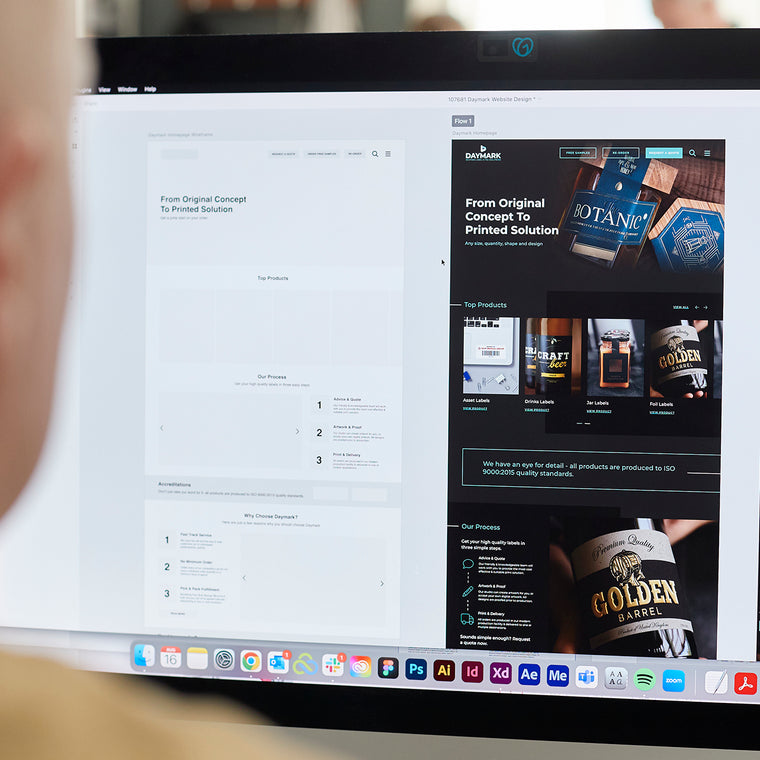UI/UX Design: Discussing Principles and Best Practices
A well-crafted UI/UX can be the deciding factor between a product's success and failure.

In today's digital landscape, where user attention spans are fleeting and competition is intense, the importance of user interface (UI) and user experience (UX) design is paramount.
A well-crafted UI/UX can be the deciding factor between a product's success and failure, influencing users' perceptions, interactions, and overall satisfaction. This article delves into the fundamental principles and best practices underpinning the creation of intuitive user interfaces and compelling user experiences.
Understanding UI and UX
Before we explore the principles, it's crucial to differentiate between UI and UX design. UI design concerns the visual elements users engage with, such as buttons, typography, colour schemes, and layouts. It represents the visual embodiment of a product's functionality. In contrast, UX design centres on the overall experience a user undergoes when interacting with a product, encompassing aspects like usability, accessibility, user flow, and emotional response.
Principles of Intuitive UI Design
Clarity and Consistency: UI elements should be clear and consistent throughout the product. Users should be able to understand the purpose of each element and predict how they’ll behave.
Simplicity: Keep the interface simple by eliminating unnecessary elements. A clutter-free UI enhances usability and reduces cognitive load.
Hierarchy: Establish a clear visual hierarchy to guide users’ attention. Important elements should stand out while maintaining a balanced composition.
Feedback and Affordance: Provide visual and interactive feedback to confirm users’ actions and provide a sense of control. Affordances indicate the function of an element, making it intuitive to use.
Typography and Readability: Choose legible fonts and appropriate font sizes. Ensure readability across various devices and screen sizes.
Colour Theory: Employ a well-thought-out colour palette that aligns with the product’s branding and evokes the desired emotions. Use colour contrast to aid readability and distinguish elements.
Principles of Engaging UX Design
User-Centred Design: Understand your target audience’s needs, behaviours, and preferences. Design with the user in mind at every stage.
User Flow: Create a seamless and logical flow through the product. Users should easily navigate from one task to another without confusion.
Accessibility: Design with inclusivity in mind to serve users with disabilities. This includes considerations for screen readers, keyboard navigation, and colour contrast.
Emotional Design: Tap into users’ emotions to create a memorable experience. Consider how elements like colour, imagery, and micro-interactions influence emotional responses.
Micro-Interactions: Incorporate subtle animations and micro-interactions to provide instant feedback, enhance engagement, and inject personality into the interface.
Performance: Optimise loading times and interactions to ensure a smooth and frustration-free experience. Slow-loading or unresponsive interfaces can drive users away.
Best Practices for a Successful UI/UX Design Process
Research: Conduct thorough user research to understand user behaviours, pain points, and expectations. This informs the design decisions.
Wireframing and Prototyping: Create wireframes and prototypes to visualise the layout and interactions before committing to detailed design. This iterative process helps identify potential issues early on.
Testing and Iteration: Regularly test the UI/UX with real users and gather feedback. Use this feedback to iterate and refine the design for optimal results.
Collaboration: Foster collaboration between designers, developers, and stakeholders. This ensures a holistic approach to design and aligns everyone with the product’s vision.
Stay Updated: UI/UX design is a dynamic field. Stay updated with the latest design trends, technologies, and user preferences to deliver modern and relevant experiences.
Conclusion
Successful UI/UX design is a synergy of thoughtful principles and meticulous execution. By adhering to principles of intuitive UI and engaging UX design, and by following best practices throughout the design process, designers can create products that captivate users, foster positive engagements, and drive success in today’s competitive digital landscape.
Absolute Design is a leading branding agency in Nottingham, grounded in traditional design processes. We fully appreciate the significance of UI/UX and adhere to a systematic approach to guarantee successful brand positioning. Get in touch to discuss your upcoming project.
CONTACT
Looking to elevate your brand with top-tier UI/UX design?
Trust in the expertise of Absolute Design, Nottingham's premier branding agency, to elevate your branding and captivate your audience.

Enter your email address to sign up to our newsletter, featuring case studies, insights, industry news and much more.
